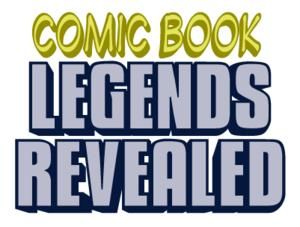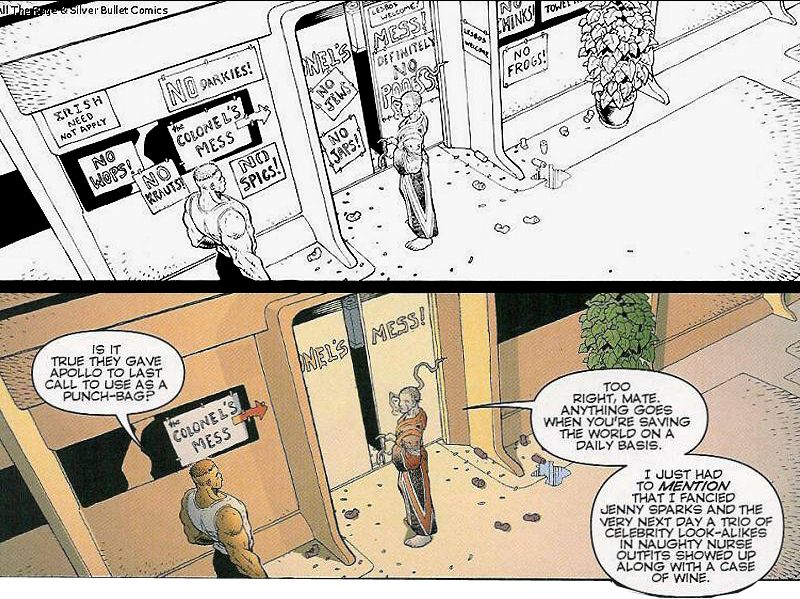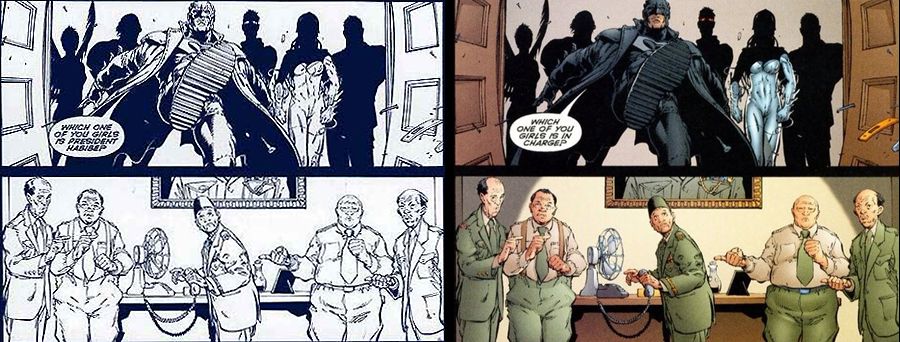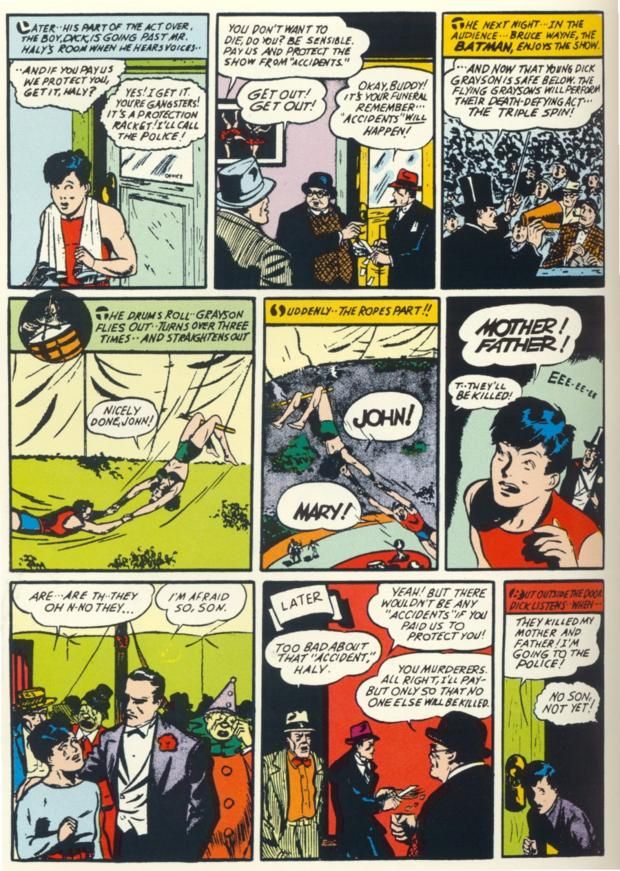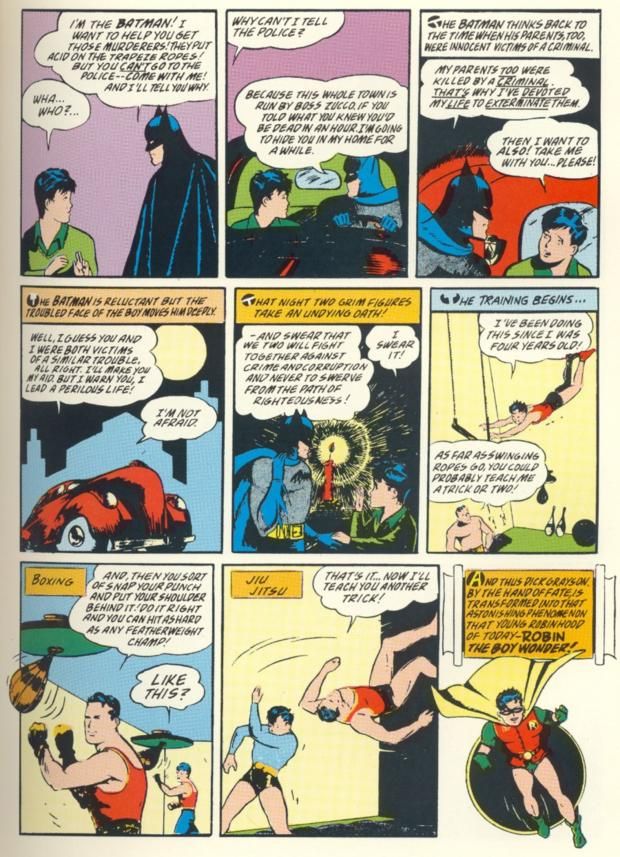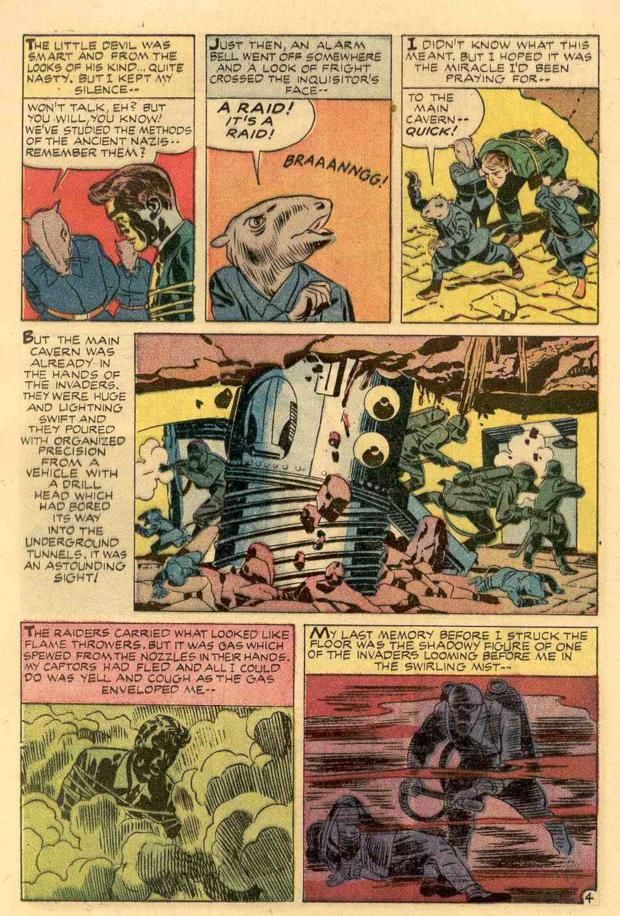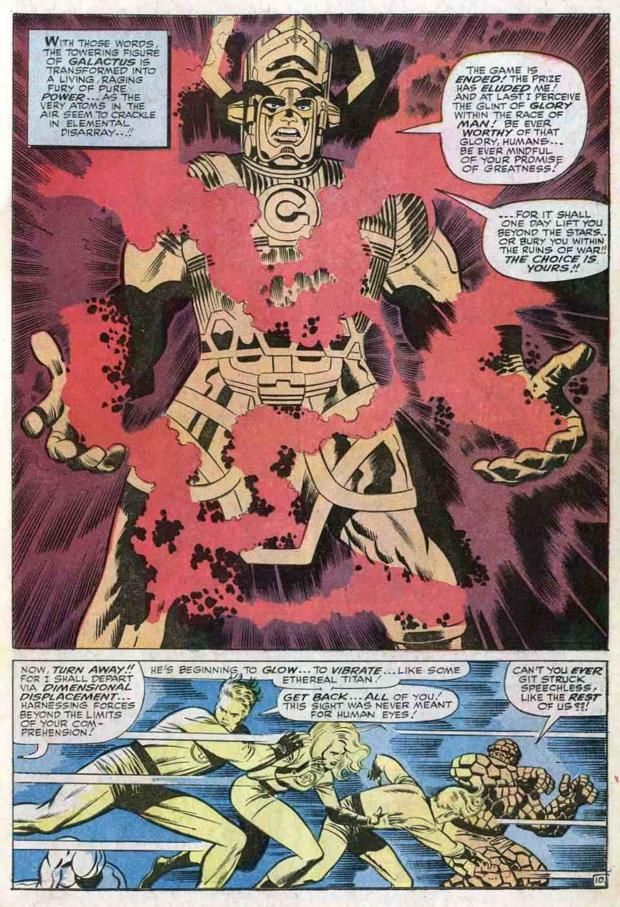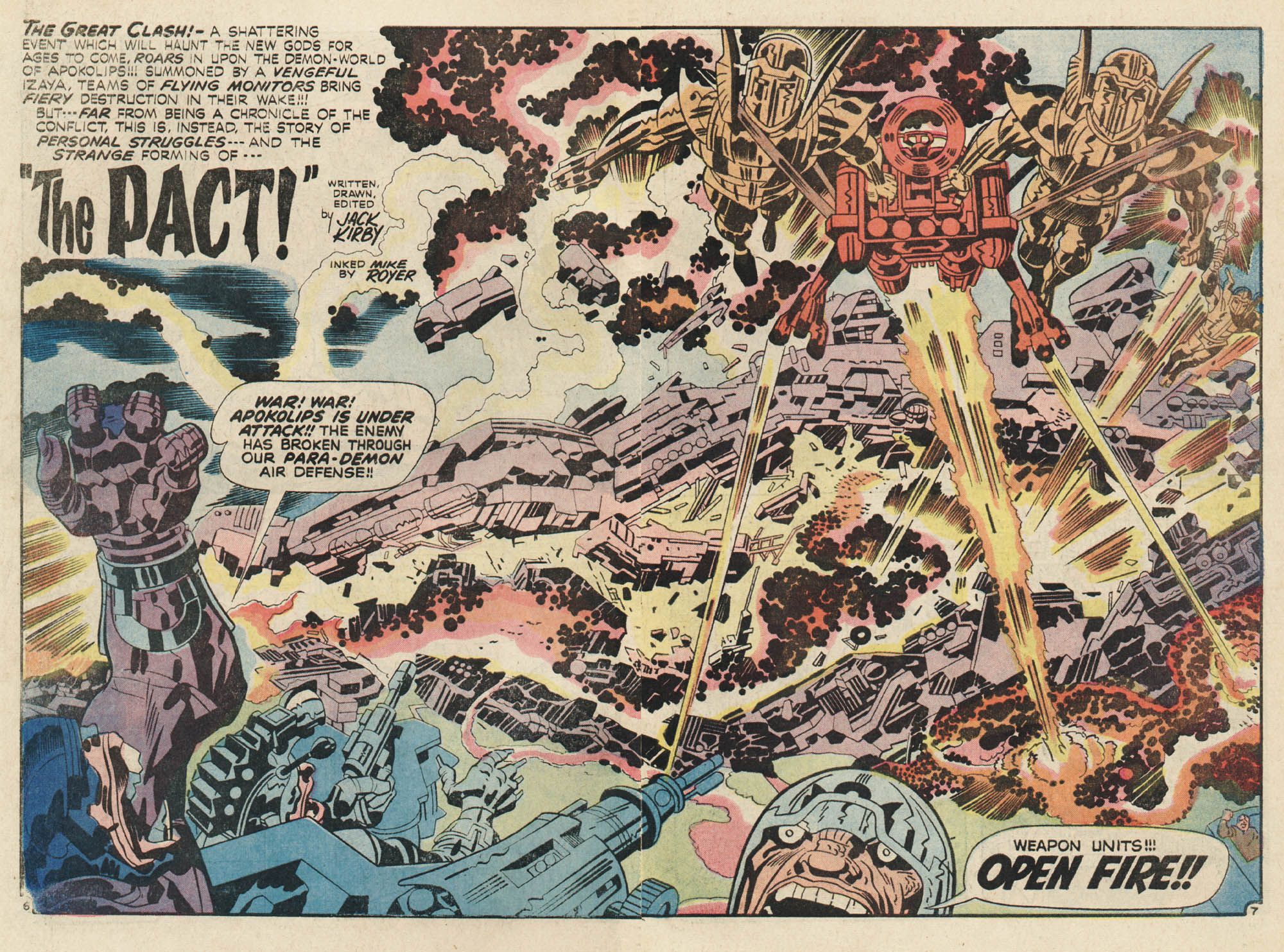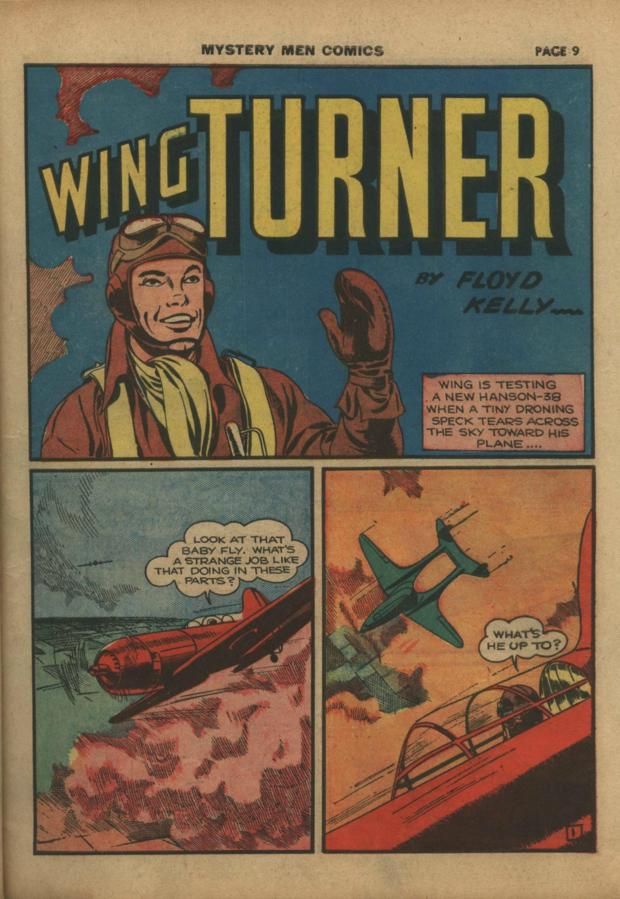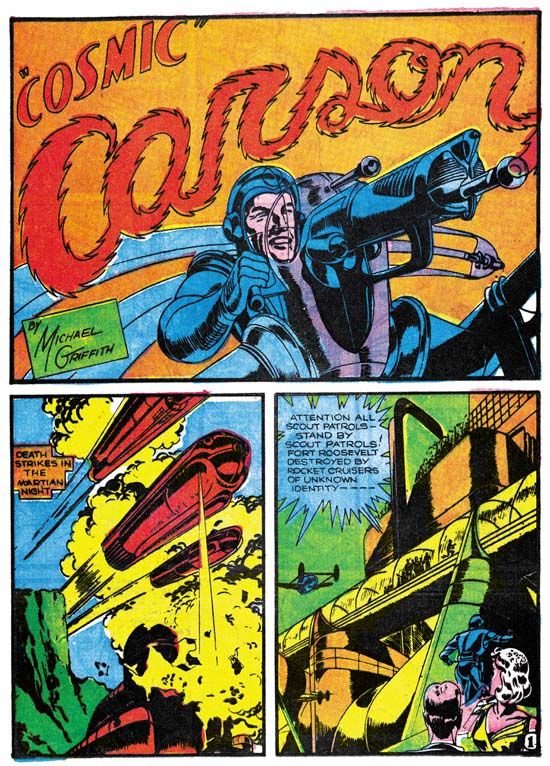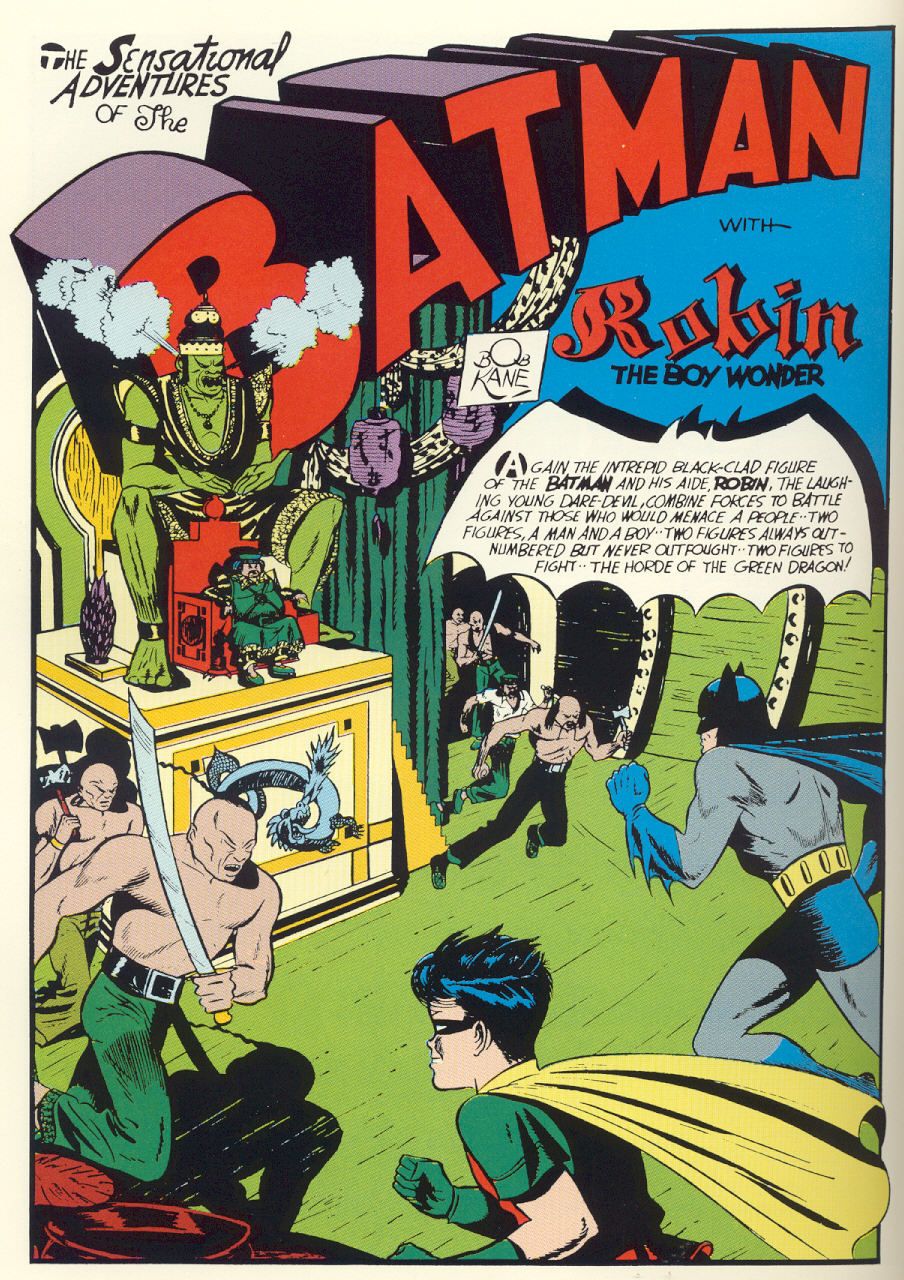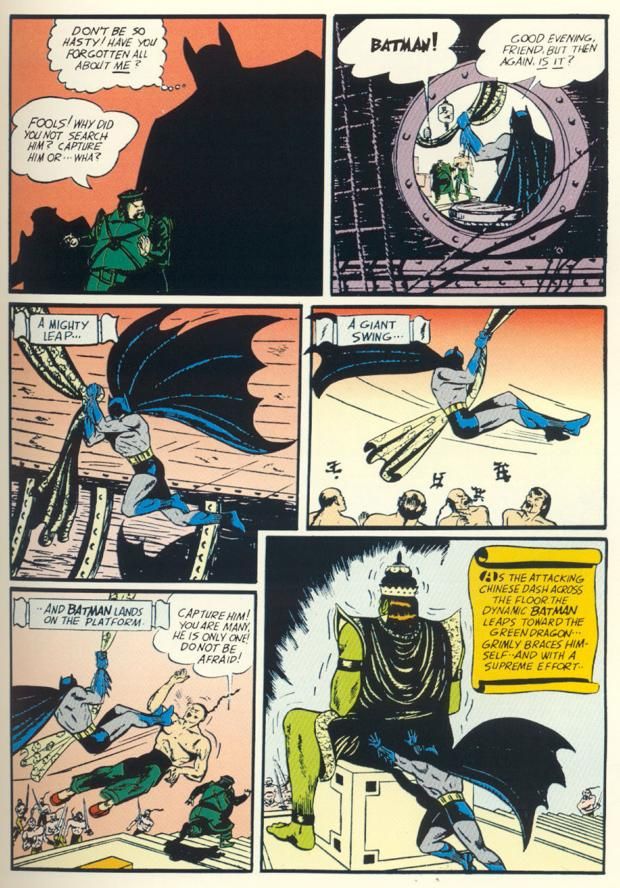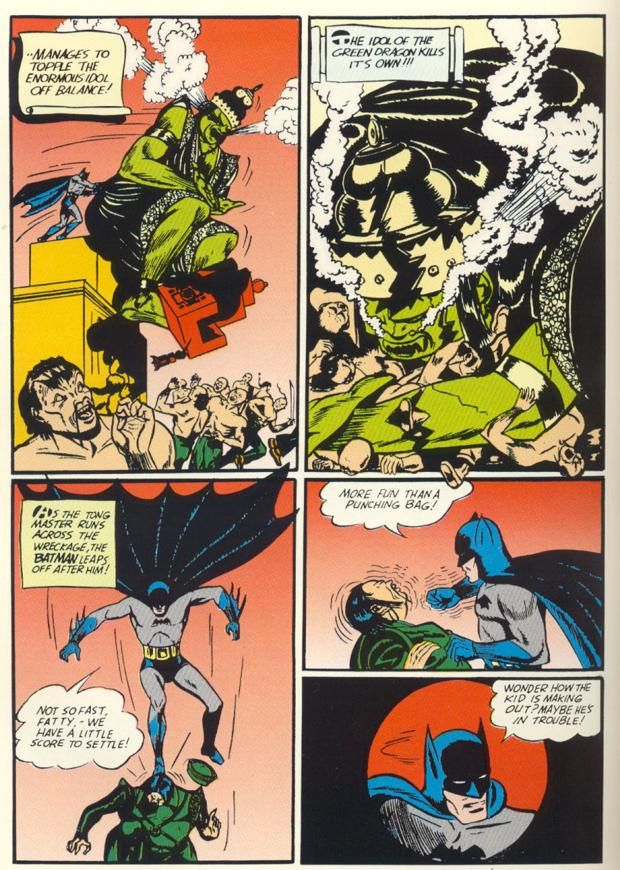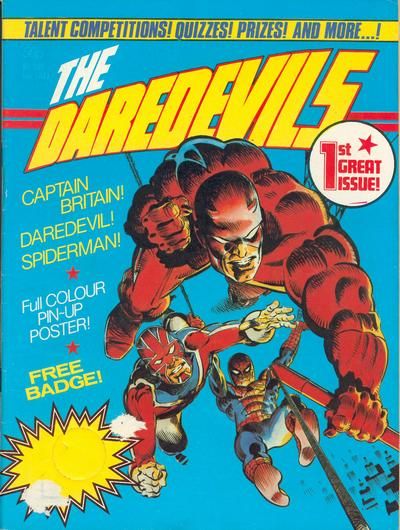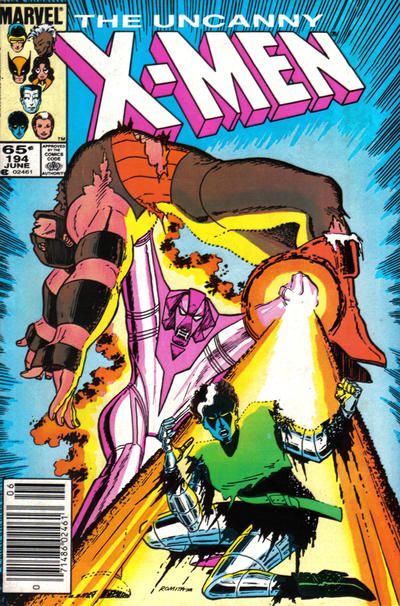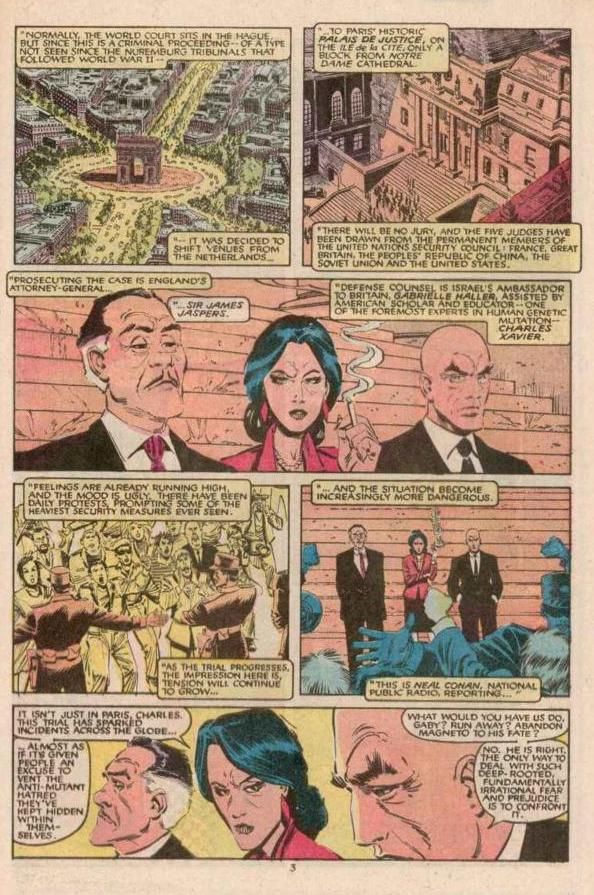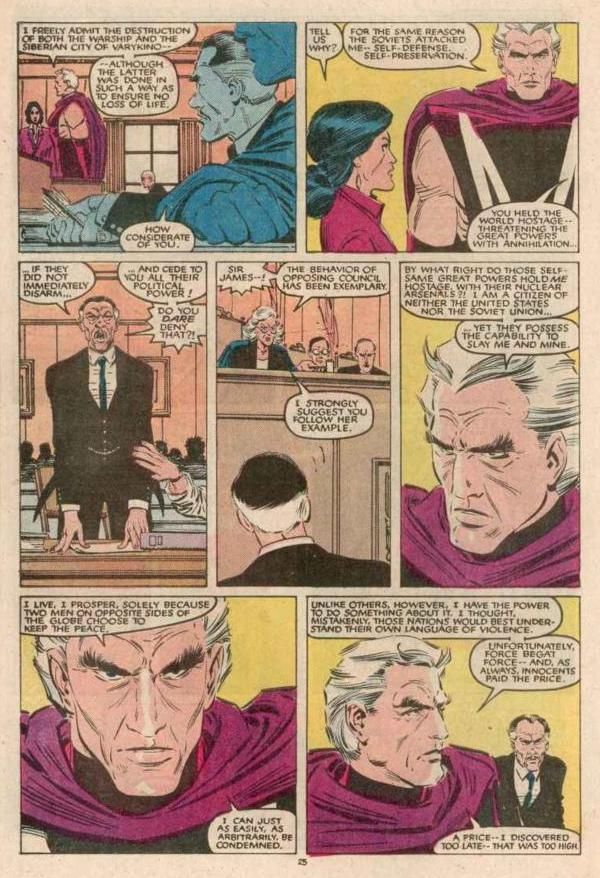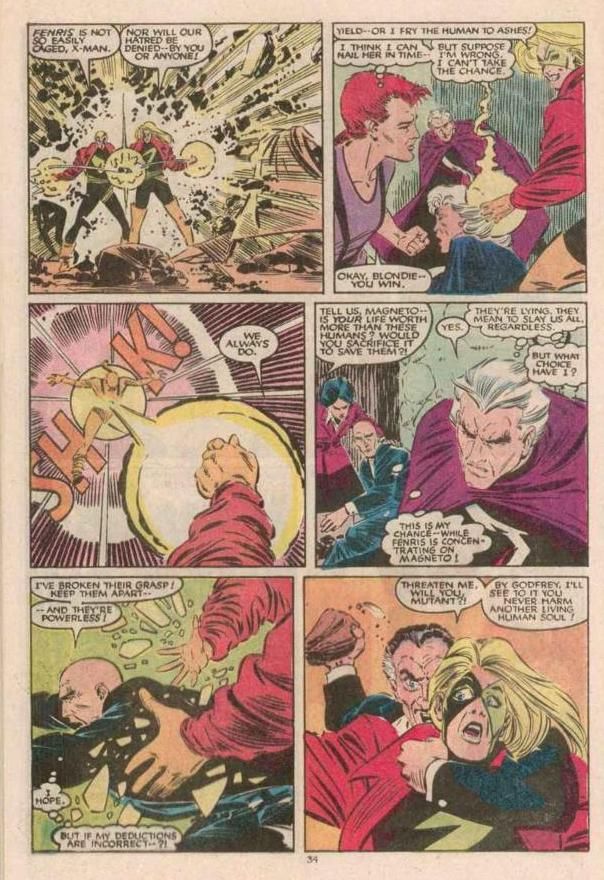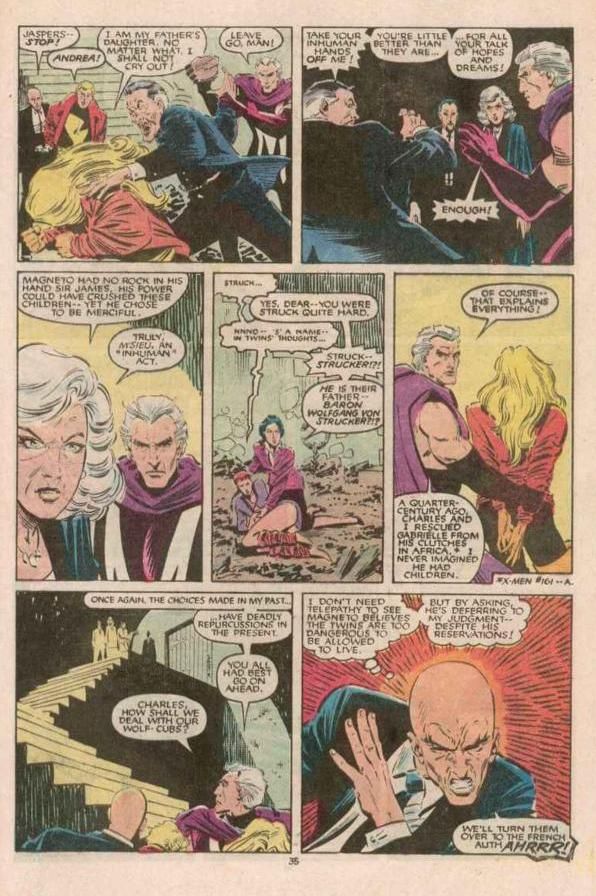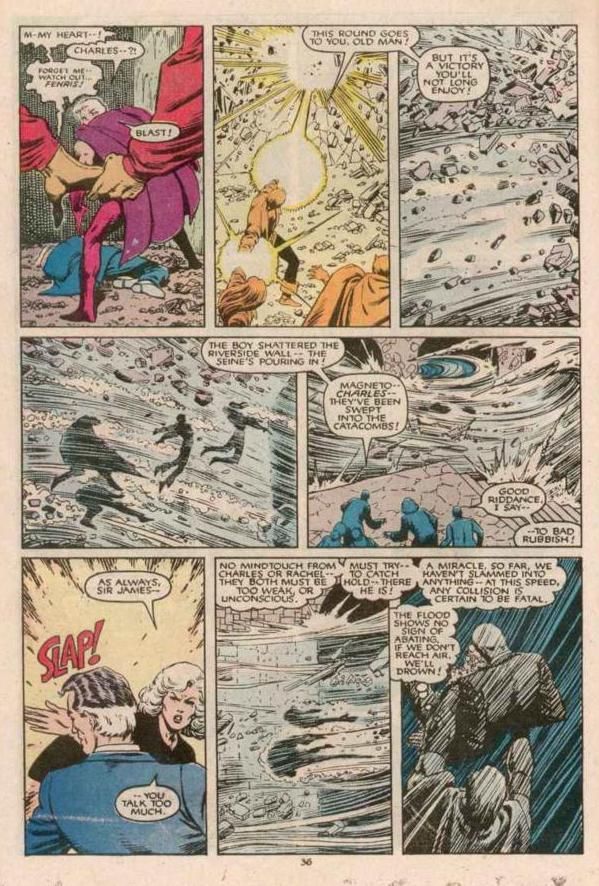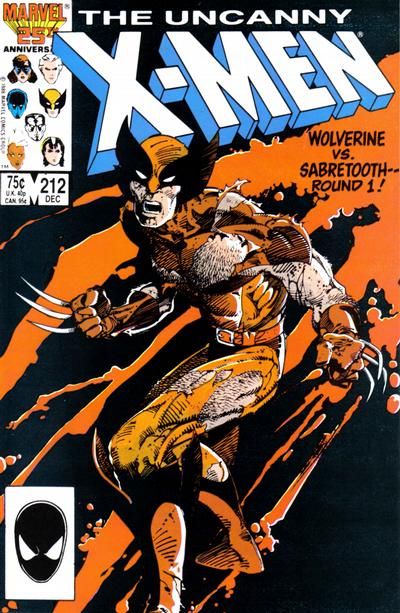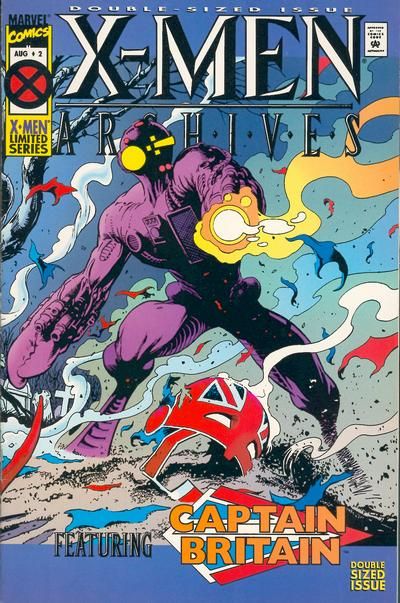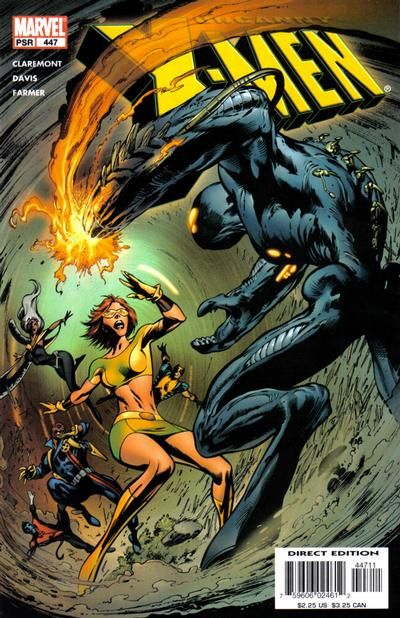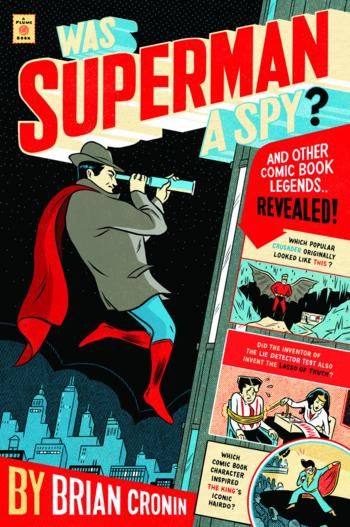Welcome to the three hundredth in a series of examinations of comic book legends and whether they are true or false. Click here for an archive of the previous two hundred and ninety-nine.
Comic Book Legends Revealed is part of the larger Legends Revealed series, where I look into legends about the worlds of entertainment and sports, which you can check out here, at legendsrevealed.com. I'd especially recommend you check out this installment of Nursery Rhyme Legends Revealed to learn about the supposed origins of "Humpty Dumpty" and "Mary Had a Little Lamb" and also marvel at how a flight attendant was sued for making use of a nursery rhyme!
Follow Comics Should Be Good on Twitter and on Facebook (also, feel free to share Comic Book Legends Revealed on our Facebook page!). If we hit 3,000 followers on Twitter, you'll have the option to get a bonus edition of Comic Book Legends the week after we hit 3,000. So go follow us (here's the link to our Twitter page again) to get that extra Comic Book Legends Revealed! Not only will you get updates when new blog posts show up on both Twitter and Facebook, but you'll get original content from me, as well!
Since this is the 300th installment of Comic Book Legends Revealed, this week you got more than TRIPLE the regular amount of legends! In fact, we took up the entire weekend with Comic Book Legends Revealed! Friday was Part 1 (which you can find here) and yesterday was Part 2 (which you can find here). The special theme this week is that there is one legend related to each one of the Top Five Writers and Top Five Artists from our recent Top 100 Comic Book Writers and Artists countdown! So that's a total of ten legends! And all about the biggest names in comics! In fact, today contains perhaps my most requested legend of all time! So be sure to keep reading to get the full experience of Comic Book Legends Revealed #300!
Let's begin!
COMIC LEGEND: Frank Quitely was censored on his very first issue of The Authority!
STATUS: True
Frank Quitely was #2 on the Top 50 Comic Book Artists countdown.
As you folks may well know by now, in the final arc of Mark Millar's run on Authority (which ended up being the final story of the first volume), Frank Quitely left before the story finished. Superstar artist Arthur Adams came in to fill-in, but the second part, scheduled to be released in September 2001, was delayed because DC Comics' editorial feared that the issue would be too controversial after the terrorists attacks on September 11th.
So the issue was delayed while numerous edits took place. The DC Database helpfully lists the edits as:
The second panel on page four, originally a long panel showing Teuton flying through several super-teens and tearing them apart, was instead turned into two panels of him throwing the super-teens into the sun.
The bottom panel on page five, in which the Colonel kicks the head off one of the super-teens, was changed to remove detail from the victim's face.
The third panel on page six was airbrushed to remove the appearance of Rush's right nipple.
The third panel on page eight originally showed various derogatory signs outside the Colonel's room; these were removed from the final version.
The bottom panel of page eight originally showed that the Colonel had received the corpse of Jenny Sparks for his own pleasure. This was changed to three Sparks lookalikes.
The top three panels on page thirteen original showed Swift cleaning the dishes with her tongue. This was changed to her slaving over a chicken dinner and a souffle.
The bottom of page thirteen originally showed Swift's master/husband using her tongue for an ashtray. In the final version, he puts out his cigar in the souffle.
In the original script, the President appearing in this issue was President George W. Bush. In the wake of September 11th, these were all changed to a president who resembles Merkin Muffley from the film Doctor Strangelove.
All of the editorial discord over one of DC's most popular series left writer Mark Millar famously displeased, stating about the situation:
To be honest, I’d have serious reservations about working with any company which was under the DC umbrella while they’re under the current administration. The Authority was selling more than Superman by our eighth issue, we’d been all over the international press, we’d received huge critical acclaim and been nominated for a ton of awards. And they still dicked us around. How could you possibly trust them with another series when they could decide, on a whim, to do the same again? I should point out that I bear no ill-feeling towards Wildstorm. They fought our corner from the start and I still have a good relationship with all the people there.
However, while these edits got the most attention, what's fascinating is that DC was causing major edits from the VERY BEGINNING of Mark Millar and Frank Quitely's run.
Richard De Angelis has a great article on his nifty site, Comic Book Justice, where he details self-censorship in comics involving political issues (so, for instance, he spotlights the President Bush edit above and the signs outside the room).
In the piece, he discusses how DC began undercutting Mark Millar from the get go. You see, Millar and Quitely's run on Authority was based under the premise that the Authority had decided to go after the "real bad guys" of the world, despots and tyrants.
Their first target was Bacharuddin Jusuf "BJ" Habibie, President of Indonesia (although by the time the comic was released, Habibie was no longer president), who was the Vice President and protege of the rather infamous President Suharto, who had served as Indonesia's president for thirty-two extremely controversial years.
However, DC objected to actually identifying a specific REAL person for the Authority's mission (even though that was the point of the story), so they had the pages edited to make the bad guy generic.
So, not the best way to begin a professional relationship.
Thanks to Richard De Angelis for the information! And thanks to Rich Johnston, who I believe got the original scans of the pre-edited Adams pages.
COMIC LEGEND: Jack Kirby was the first comic book artist to draw splash pages.
STATUS: False
Jack Kirby was #1 on the Top 50 Comic Book Artists countdown.
Our own MarkAndrew asked me back in December:
Okay, Comic Book Urban Legend Time:
Did Kirby invent the splash page? Was he the first artist ever to use full page panels in comic books? I haven’t found anyone working BEFORE him who used splashes, but I haven’t found absolute positive confirmation, either.
Amusingly enough, I began researching this on my own, independently, and I basically had an answer and then it occurred to me, "Hey, doesn't this sound like the sort of thing Harry Mendryk would have done something on already?"
And sure enough, Harry Mendryk, the proprietor of one of the most awesome comic book history websites there is, the Simon and Kirby blog over at the Kirby Museum (you can check it out here), did indeed do a whole series on early Kirby that was extremely useful for my purposes, as he had a few issues I could not find.
In any event, as Mark quite well knows (hence his question), Jack Kirby stood out from other comic book artists very quickly during the 1940s.
For an example of what a typical comic book looked like, art-wise, at the beginning of the 1940s, let's take a look at Detective Comics #38 (the introduction of Robin) by Bob Kane and Jerry Robinson.
As you can see, their approach was quite similar to the comic strip tradition, of which, of course, comic books spun out of.
Kirby, on the other hand, liked more fluidity to his panels, as you can see from this 1941 page...
And he often went with bigger panels, as well, something he continued all throughout his career. Here's a 1950s page by Kirby...
And, of course, his Marvel days...
and his DC days...
Kirby got even MORE bombastic with his page usage.
But while Kirby was perhaps one of the early "masters" of the splash page, did he invent it?
No.
When Kirby did his first comic book work in May 1940, here was what he did...
Wing Turner for Mystery Men Comics #10...
and Cosmic Carson for Science #4...
While you may note that, as I said before, Kirby used much bigger panels than a typical comic of the day, neither story had a splash page. So, if this was the beginning of Kirby's comic book work, was anyone else doing splash pages?
From the same month, Detective Comics #39, by Bob Kane and Jerry Robinson...
So, no, Kirby did not invent the splash page.
By the way, as an added bonus, check out these later pages from Detective Comics #39...
Ah, good ol' bloodthirsty Batman.
Thanks to Mark Andrew for the question and thanks to Harry Mendryk for being awesome and informative!
COMIC LEGEND: Alan Moore's concerns over the copyrights to his Marvel UK work dramatically changed Chris Claremont's plans for the Uncanny X-Men post-#200.
STATUS: True
Alan Moore was #1 on the Top 50 Comic Book Writers countdown.
I made reference to this one possibly being my most-requested legend, but I now recall one that has definitely been requested more. That one I don't have an answer to. This one I do, so ta da!
So as many of you know by now, Alan Moore and Alan Davis had a remarkable run on Captain Britain in the pages of three different Marvel UK comic, including Daredevils. Some truly excellent comic books.
(by the way, imagine being a kid in England and getting to read a comic book that had brand-new Alan Moore and Alan Davis Captain Britain stories, Frank Miller Daredevil stories and Stan Lee and John Romita Spider-Man stories. Wow!)
A major storyline in the comic involved a character that had been introduced by Dave Thorpe and Alan Davis (right before Alan Moore took over the book), Sir Jim Jaspers, was a member of Parliament on an alternate reality Earth who was super evil and wanted a world with no superheroes. Jaspers, who had the ability to warp reality, created a super-powerful android known as The Fury, who exterminated pretty much all the superheroes in England.
The Captain Britain from OUR reality got involved and he is actually KILLED by the Fury of that reality! Merlyn resurrects him, and as it turns out, it was a plan by Merlyn to steel Captain Britain against the threat of the Jim Jaspers of OUR universe, who is even MORE powerful and when he gets elected Prime Minister of the United Kingdom, well, things go bad quickly.
During this storyline, Moore and Davis introduce a lot of concepts that have continued to this day, including a lot of novel alternate reality stuff. It all came to a close in early 1984.
Now, as you might also know, Captain Britain was created by Chris Claremont, so he was always quite interested in the series and all that Moore and Davis were doing with it. So at the end of 1985, Claremont decided that he was going to bring the stories from the Marvel UK books into Uncanny X-Men.
The seeds had been planted in the issues leading up to Uncanny X-Men #200, when a powerful sentinel from the future, known as Nimrod, showed up.
In December 1985's Uncanny X-Men #200, we meet for the first time, James Jaspers.
And he is not a nice man...
Not nice at ALL...
However, soon before Uncanny X-Men #200 came out, Marvel, in their American Doctor Who comic, did two issues that reprinted stories Alan Moore had written in England.
Marvel, at the time, did not have any deal in place where you would be paid royalties for foreign reprints.
Moore, as you might imagine, was outraged. Marvel had not asked him for permission and they had not paid him. So when he then found out that Chris Claremont was planning on doing a major X-Men storyline involving his characters from his Marvel UK work, well, he was even angrier, and any chance he had of reconciling with Marvel over the reprint issue (they stopped reprinting his stories when he complained) was pretty much dead.
Now, legally, could Marvel still have gone forward with using the characters Moore had either created or developed? UK copyright law is different from US copyright law, and things were a bit sketchy but honestly? Probably. But as we have seen many times over the years, comic book companies tend to lean towards the side of being conservative about this stuff. So Marvel's lawyers recommended just dropping any plots involving Moore's characters.
When Claremont found out about the controversy (obviously, he did not know that Moore was mad when he began using Jaspers, as obviously Claremont planned on using the characters as more or less a TRIBUTE to Moore) he quickly re-wrote the stories he had planned, which was going to be basically a two-year (or so) storyline. Everything happened as planned for the next few issues (which makes sense, as obviously by the time Claremont even LEARNED about the problem, the issues were already being produced), including Rachel Summers leaving the book.
But soon Claremont's original plans diverged from what happened in the comic. The original plan involved Nimrod merging with the Fury to form an astonishingly powerful villain. This new villain would wipe out the Morlocks and most of the Hellfire Club. In the various battles with the X-Men, he would also severely wound Nightcrawler. Ultimately, Kitty Pryde would temporarily defeat him by phasing through him, messing with his circuits but the reaction would have left her injured, as well.
Nightcrawler, Kitty, Colossus and Longshot (hot off of his mini-series) would leave the X-Men to go to England where Colossus would serve as a bodyguard of sorts to the recuperating Kurt and Kitty. This, naturally, would lead into a new book called Excalibur.
Jaspers, meanwhile, would team up with Nimrod/Fury, and slowly turn the population of the world against the X-Men. Mutants all over the world would be forced to team up together. Eventually, Forge and Roma would get involved and the Siege Perilous would be used to defeat Jaspers and Nimrod/Fury, but the X-Men would be warped via Jaspers powers so that Claremont could make various changes with the team.
Now, obviously, once you have to remove the Fury and Jaspers, things has to change dramatically. Instead of Nimrod/Fury killing the Morlocks, it became Mister Sinister and the Marauders.
Instead of an epic battle against Jaspers and Nimrod/Fury, it was a character Claremont had introduced a year or so ago, the Adversary.
What's noteworthy is that the changes to the Mutant Massacre also likely led to the change of the format, as they expanded it to other titles, and it was this that dramatically changed the way that Marvel Comics were written for years, as no one at Marvel had tried something as sweeping as Mutant Massacre. Obviously there had been crossovers and tie-ins, but not the way Mutant Massacre had it, where you would "need" to read, like, four different titles (for multiple issues each) to get the full story. Marvel quickly repeated it with the follow-up storyline, Fall of the Mutants and by Inferno, it had spread to the rest of the Marvel Universe, and the way crossovers were handled had forever changed.
And all because Marvel got Alan Moore angry.
Eventually, Marvel and Alan Moore worked out a deal (this led to the X-Men Archives reprints of Moore's Captain Britan work) so they can now freely use the Moore characters.
Notably, in recent years, Alan Davis had worked with Claremont on stories involving the Fury's return.
All of this information is courtesy of the tremendous research work put in by Phil Hall, the notable comic book reporter and editor in the United Kingdom, who worked for Comics International and Borderline (among many different magazines). He shared all of this information in a usenet post back in 2000. You can read the full details here. Now, we're dependent upon a secondhand account here (although I have seen John Romita Jr. reference the events in interviews, as well), but I trust Hall, so I'm willing to go with a true here. Thanks, also, to Rich Johnston for noting the part about the Moore/Marvel agreement.
Okay, that's it for this week and our 300th extravaganza!
Thanks to the Grand Comics Database for this week's covers! And thanks to Brandon Hanvey for the Comic Book Legends Revealed logo!
Feel free (heck, I implore you!) to write in with your suggestions for future installments! My e-mail address is cronb01@aol.com. And my Twitter feed is http://twitter.com/brian_cronin, so you can ask me legends there, as well!
Here's my book of Comic Book Legends (130 legends - half of them are re-worked classic legends I've featured on the blog and half of them are legends never published on the blog!).
The cover is by artist Mickey Duzyj. He did a great job on it...(click to enlarge)...
If you'd like to order it, you can use the following code if you'd like to send me a bit of a referral fee...
Was Superman a Spy?: And Other Comic Book Legends Revealed
See you all next week!

